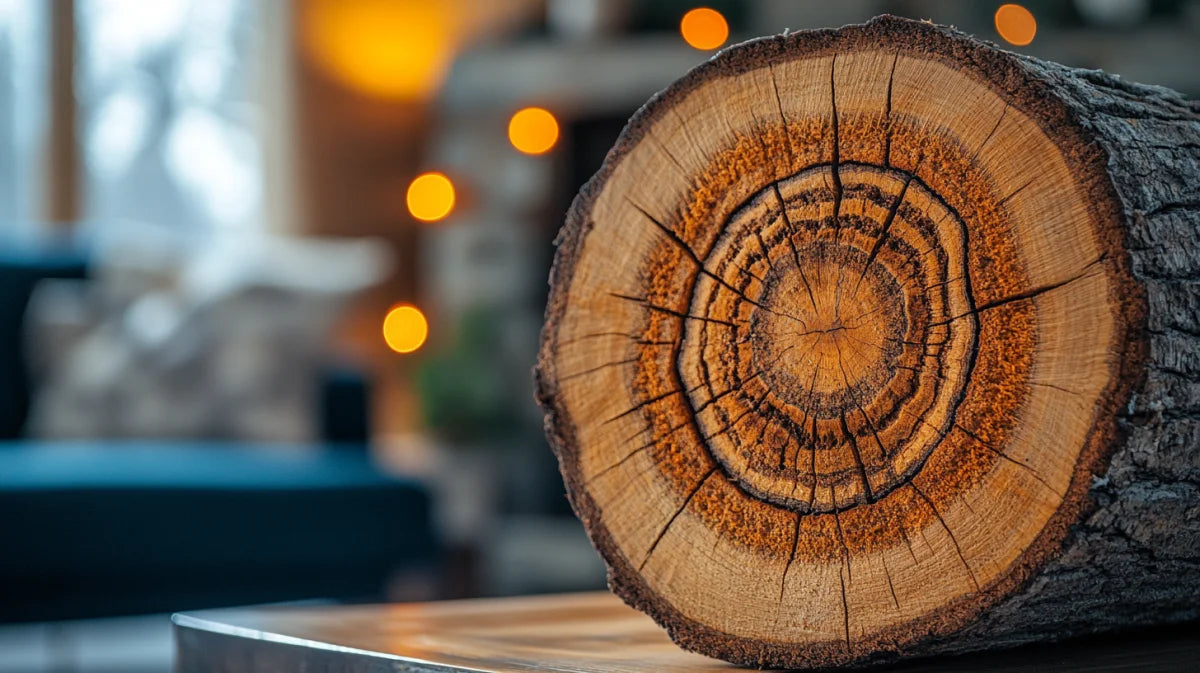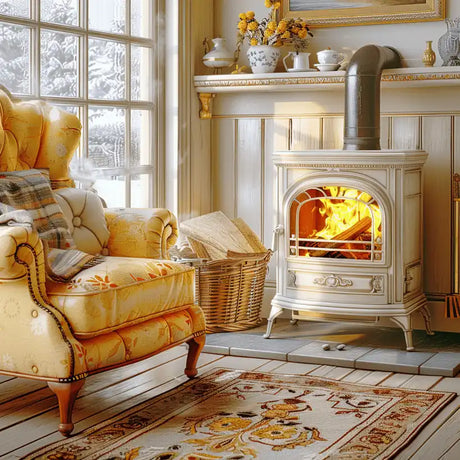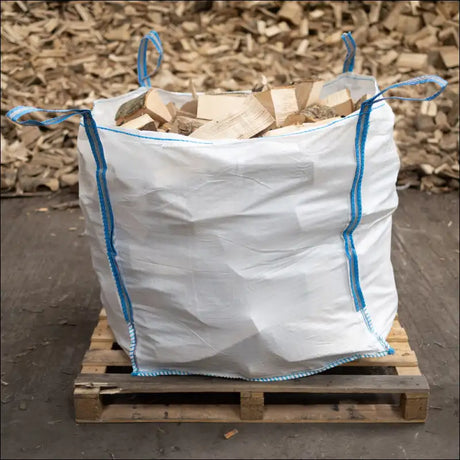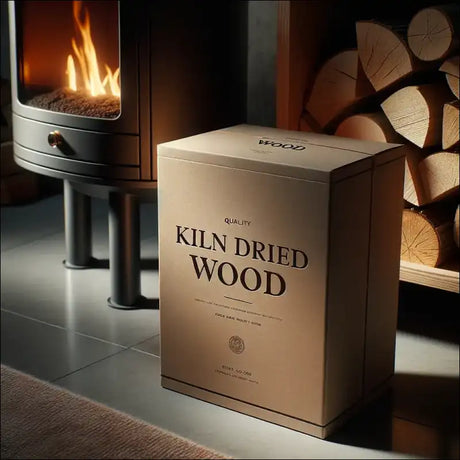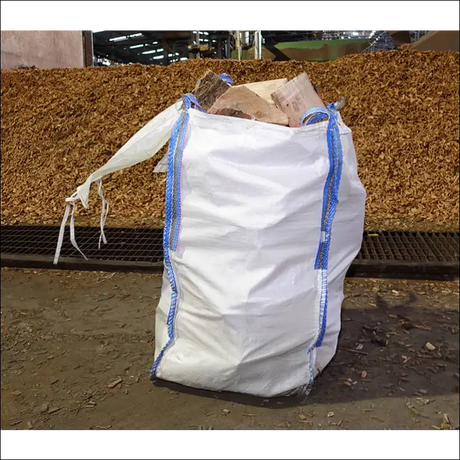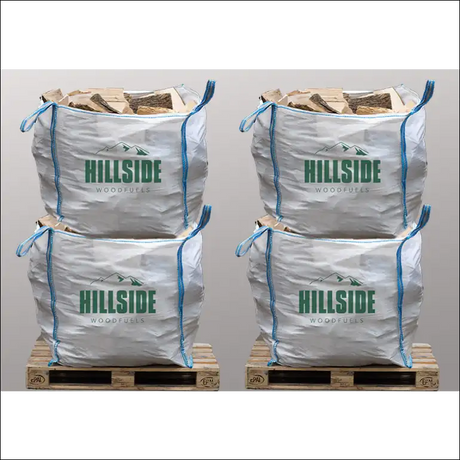In the chilly months that blanket the UK, there's nothing quite like the warm, inviting glow of a wood fire. But not all wood is created equal when it comes to burning efficiently and safely. That's where seasoned wood comes into play. If you've ever wondered "What is seasoned wood?", you're in the right place. Let's dive into the world of seasoned wood and discover why it's the preferred choice for many UK homeowners.
Understanding Seasoned Wood
Seasoned wood refers to wood that has been dried, either naturally or through an artificial process, to reduce its moisture content. This drying process typically takes several months to a year or more, depending on the type of wood and the drying method used. The goal is to bring the wood's moisture content down to around 20% or less, making it ideal for burning.
The Seasoning Process
- Cutting: The process begins with freshly cut wood, often referred to as "green wood".
- Splitting: Large logs are split into smaller pieces to increase surface area and speed up drying.
- Stacking: The split wood is stacked in a way that allows air to circulate freely.
- Waiting: The wood is left to dry naturally for 6-18 months, depending on the wood type and climate.
- Testing: The wood's moisture content is checked to ensure it's properly seasoned.
Why Use Seasoned Wood?

Using seasoned wood offers numerous benefits for both your fireplace and the environment. Let's explore some of these advantages:
-
Improved Efficiency: Seasoned wood burns more efficiently because it doesn't waste energy evaporating excess moisture. This means you'll get more heat from your fire.
-
Reduced Smoke: Wet or unseasoned wood produces more smoke, which can be unpleasant and potentially harmful to your health.
-
Less Creosote Build-up: Burning seasoned wood results in less creosote build-up in your chimney, reducing the risk of chimney fires.
-
Easier to Light: Seasoned wood ignites more easily, making it simpler to start and maintain your fire.
-
Better for the Environment: Efficient burning means fewer pollutants released into the atmosphere.
How to Identify Seasoned Wood
Knowing how to identify seasoned wood is crucial for ensuring you're using the best fuel for your fire. Here are some telltale signs:
- Colour: Seasoned wood is usually darker and greyer compared to fresh-cut wood.
- Weight: It's significantly lighter than unseasoned wood due to moisture loss.
- Bark: The bark often becomes loose or starts to fall off.
- Cracks: You'll notice cracks or splits at the ends of the logs.
- Sound: When two pieces are knocked together, seasoned wood produces a hollow sound rather than a dull thud.
Types of Wood and Seasoning Times

Different types of wood require varying amounts of time to season properly. Here's a quick guide to some common UK wood types:
- Oak: 1-2 years
- Ash: 6-18 months
- Beech: 1-2 years
- Birch: 6-12 months
- Pine: 6-12 months
Choosing the right logs for wood burners is crucial for optimal performance and heat output.
Seasoned Wood vs. Kiln-Dried Wood
While seasoned wood is dried naturally, kiln-dried wood is artificially dried in a kiln. Both have their advantages:
Seasoned Wood
- Dried naturally over time
- More environmentally friendly process
- Often less expensive
Kiln-Dried Wood
- Dried quickly in a controlled environment
- Typically has a lower moisture content (under 20%)
- Ready to use immediately
Kiln-dried logs offer several benefits and are becoming increasingly popular in the UK.
Storing Seasoned Wood
Proper storage is crucial to maintain the quality of your seasoned wood. Here are some tips:
- Elevate: Keep the wood off the ground to prevent moisture absorption.
- Cover: Use a waterproof cover to protect from rain, but allow air circulation.
- Stack Properly: Stack the wood in a way that allows air to flow between the logs.
- Location: Store in a sunny, breezy spot if possible.
For more detailed advice, check out our guide on how to store kiln-dried logs.
The Impact of Seasoned Wood on Your Fireplace
Using seasoned wood can significantly impact the performance of your fireplace or wood-burning stove:
- Higher Heat Output: Seasoned wood burns hotter, providing more warmth for your home.
- Cleaner Glass: Less moisture means less soot build-up on your stove's glass.
- Longer Burn Times: Dry wood burns more slowly, meaning your fire lasts longer.
- Reduced Maintenance: Less creosote build-up means less frequent chimney cleaning.
Environmental Considerations
Using seasoned wood is not only better for your fireplace but also for the environment. Here's why:
- Reduced Emissions: Properly seasoned wood burns more completely, reducing harmful emissions.
- Renewable Resource: When sourced responsibly, wood is a renewable fuel source.
- Carbon Neutral: The carbon released when burning wood is offset by the carbon absorbed during the tree's growth.
However, it's important to consider the environmental impact of wood burning and make informed decisions.
Common Myths About Seasoned Wood
Let's debunk some common misconceptions:
-
Myth: All old wood is seasoned wood. Fact: Age alone doesn't guarantee proper seasoning. Storage conditions matter.
-
Myth: Seasoned wood is completely dry. Fact: Seasoned wood still contains some moisture, typically around 20%.
-
Myth: You can't season wood in wet climates. Fact: While it may take longer, wood can be seasoned in any climate with proper storage.
Conclusion
Seasoned wood is an excellent choice for UK homeowners looking to maximise the efficiency and enjoyment of their wood-burning appliances. By understanding what seasoned wood is, how to identify it, and how to store it properly, you can ensure a warm, cosy, and environmentally friendly fire throughout the cold months.
Remember, whether you choose naturally seasoned wood or opt for kiln-dried logs, the key is to use dry, well-prepared wood for the best burning experience. Happy burning!
FAQs About Seasoned Wood
Q: How long does it take to season wood in the UK climate?
A: In the UK's damp climate, it typically takes 1-2 years to properly season hardwoods like oak and beech, while softer woods like pine may season in 6-12 months. Factors like air circulation, humidity, and wood type affect seasoning time.
Q: Can I use partially seasoned wood in my stove?
A: While it's best to use fully seasoned wood, partially seasoned wood can be used if mixed with dry wood. However, it may produce less heat and more smoke, potentially leading to increased creosote buildup in your chimney.
Q: What's the difference between seasoned and green wood?
A: Seasoned wood has been dried to a moisture content of 20% or less, while green wood is freshly cut and can have a moisture content of 50% or higher. Green wood is difficult to burn and produces excessive smoke.
Q: How can I speed up the wood seasoning process?
A: To accelerate seasoning, split logs into smaller pieces, stack them in a sunny, windy area off the ground, and cover the top to protect from rain while allowing airflow. Using a moisture meter can help track progress.
Q: Is it worth investing in a moisture meter for firewood?
A: Yes, a moisture meter is a valuable tool for ensuring your wood is properly seasoned. It provides accurate readings of wood moisture content, helping you avoid burning wet wood that could damage your stove or chimney.
Q: Can seasoned wood get wet, and if so, how do I dry it out?
A: Seasoned wood can absorb moisture if exposed to rain or snow. If this happens, bring the wood indoors to a dry, warm area for a few days before use. Avoid storing near your stove, as this can be a fire hazard.
Q: What are the best types of wood to season for high heat output?
A: Hardwoods like oak, ash, and beech are excellent choices for high heat output. They take longer to season but burn hotter and longer than softwoods, making them ideal for overnight burning.
Q: How does using seasoned wood affect my carbon footprint?
A: Using properly seasoned wood can reduce your carbon footprint compared to unseasoned wood. It burns more efficiently, producing more heat and less smoke, which means fewer trips to the woodpile and less overall wood consumption.
Q: Can I season wood indoors?
A: It's not recommended to season wood indoors due to the high moisture content of green wood. This can lead to mold growth and insect infestations. Always season wood outdoors in a well-ventilated area.
Q: How much seasoned wood do I need for a UK winter?
A: The amount of wood needed varies based on factors like home size, insulation, and stove efficiency. As a rough guide, many UK households use 3-5 cubic metres of seasoned wood per winter. It's always better to have extra than to run short.
Q: Is it legal to collect and season my own wood in the UK?
A: While it's legal to collect fallen wood in some public areas, many forests and woodlands require permission. Always check local regulations and obtain necessary permits before collecting wood. Alternatively, consider purchasing unseasoned wood from a reputable supplier.
Q: How does seasoned wood compare to coal for heating?
A: Seasoned wood is generally considered more environmentally friendly than coal, as it's a renewable resource. While coal may have a higher heat output, seasoned wood produces less sulphur dioxide and is carbon-neutral when sourced sustainably.
Q: Can I burn seasoned softwoods in my wood stove?
A: Yes, you can burn seasoned softwoods like pine or cedar in your wood stove. They ignite easily and burn quickly, making them great for starting fires or for use in milder weather. However, they produce less heat than hardwoods and may require more frequent refueling.
Q: How does the Forestry Commission in the UK view the use of seasoned wood for heating?
A: The Forestry Commission supports the use of sustainably sourced, properly seasoned wood for heating. They advocate for responsible woodland management and encourage the use of local, renewable wood fuel as part of a low-carbon heating strategy.

